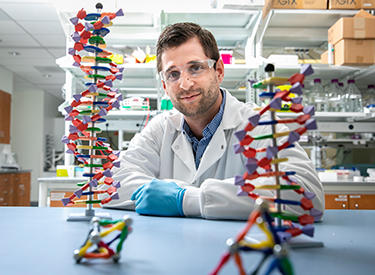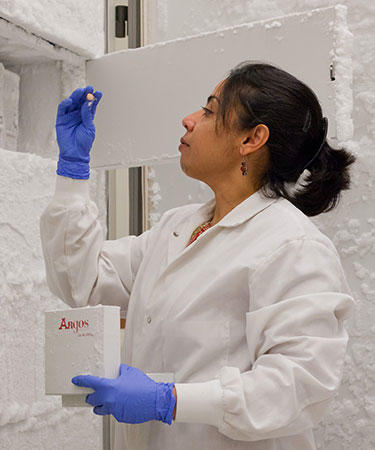Admission CTAs
Mason scientists’ DNA nanotech research could target illnesses such as the coronavirus
Mason researchers’ work with DNA nanotechnology could be adapted to fight viruses such as the coronavirus.
“We are designing a unique vaccine development tool that would enable the rapid development of vaccines,” says Remi Veneziano, an assistant professor in the Department of Bioengineering. His lab is part of Mason’s Institute for Biohealth Innovation (IBI).
He and his colleagues are using DNA nanotechnology to lay the foundation for developing vaccines that could block infection. Nanotechnology involves manipulating matter on an atomic, molecular, and supramolecular scale.
“It’s a safe and elegant way to design vaccines,” Veneziano says. “If successful, our strategy could be adapted for emerging viruses and applied to several other pathogens, including the new coronavirus.” Pathogens are microorganisms, such as viruses and bacteria, which cause disease.
“It’s a dream, but it’s very attainable,” says co-investigator Aarthi Narayanan, an associate professor in the National Center for Biodefense and Infectious Diseases. “Traditionally, vaccines are directed toward a specific virus or pathogen. Moving forward, we need a plug-and-play approach rather than reinventing the wheel each time.”
Information about the coronavirus or any other pathogen could be plugged into the tool that the team is already developing, speeding up the vaccine creation process.
The researchers received $314,000 from the U.S. Army Medical Research Acquisition Activity for a two-year project to study a vaccine development tool using DNA nanoparticles to deliver viral markers isolated from the surface of Venezuelan Equine Encephalitis Virus (VEEV), which is primarily transmitted by mosquito bites and is responsible for recurring natural outbreaks of human and animal disease around the world.
Veneziano and Narayanan are using DNA nanotechnology to lay the foundation for developing vaccines that could block infection from VEEV.
“Many biological mechanisms involving bacteria, viruses, and cells happen at the nanoscopic scale, which is very small and requires specialized techniques to investigate,” Veneziano says. “When working on the nanoscale, DNA can be made in the same shape of the virus and modified with viral proteins to mimic viruses.”
The goal is to make the immune cells believe the nanoparticle is a virus and trigger an immune response.
“Dr. Veneziano’s DNA nanotechnology platform is one of the most powerful and versatile technologies to custom design nanostructures for a breadth of applications including vaccine development,” says Michael Buschmann, chairman of the Department of Bioengineering.
Veneziano and Narayanan are seeking funding from the government and industry to study nanotechnology for vaccines for the coronavirus in the same way. “We’re working as fast as we can to develop a vaccine platform that could be applied quickly to other emerging viruses,” Veneziano says.
Viral challenges are emerging constantly, and they change constantly, Narayanan says. "The beauty of this technology is it will lend itself to any pathogen we can think of.”


